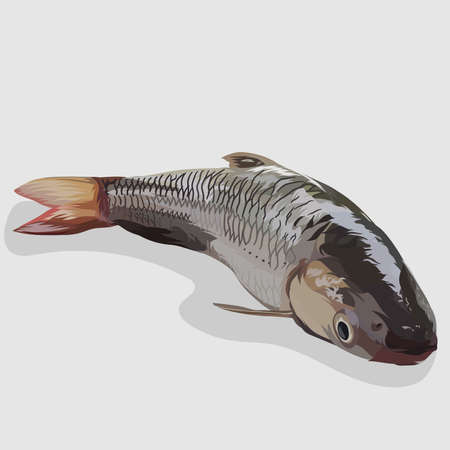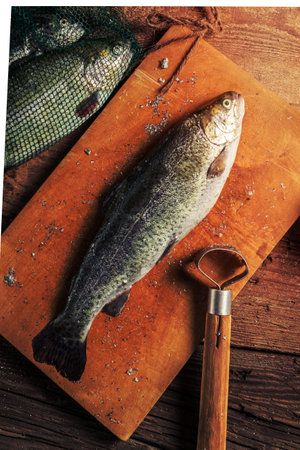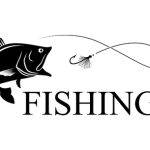1. Understanding Summer Catfish Behavior
How Summer Changes the Catfish Game
When summer hits across the U.S., catfish start acting different. Rising water temps and longer daylight hours shake up where they hang out, how they feed, and when you’ll find them biting. If you want to hook into more cats this season, you’ve got to know what makes them tick during these hot months.
Water Temperature: The Main Trigger
Catfish are cold-blooded, so their metabolism speeds up as water warms. In most American lakes and rivers, water temps climb into the 70s-80s °F range (21-27°C) through summer. This wakes catfish up—especially channels, blues, and flatheads—making them hungry and active but also picky about where they hang out.
| Water Temp (°F) | Catfish Activity Level | Where They’re Found |
|---|---|---|
| Below 65 | Slow, sluggish | Deep holes, slow pools |
| 65-75 | Active, feeding often | Mid-depths, creek mouths |
| 75-85+ | Peak activity at night/dawn/dusk | Shallows after dark, shaded cover by day |
Daylight Hours: When Are Catfish Most Active?
The longer summer days mean more sunlight—and catfish aren’t big fans of bright light. They usually feed aggressively at night, during dawn, or just before sunset. When the sun’s blazing, most cats move deeper or tuck under log jams, cut banks, or shaded structure to stay cool.
Hot Tip:
- If you’re bank fishing in the afternoon, target deep holes or shadowy spots close to shorelines.
- If you’re on a boat, use electronics to find submerged timber or ledges where cats hide from direct sun.
Summer Feeding Patterns: What’s on the Menu?
Baitfish like shad and bluegill spawn in early summer and get sluggish as it gets hotter. Catfish chow down on whatever is plentiful—live bait at night and stink baits or cut bait once it heats up. Their sense of smell is razor sharp this time of year because warmer water helps scent travel faster.
| Time of Day | Main Feeding Zone | Bait Choice |
|---|---|---|
| Dawn/Dusk/Night | Shallow flats, creek mouths | Live bait (shad, bluegill), fresh cut bait |
| Midday (Hot Sun) | Deep holes, under cover/structure | Stink baits, chicken liver, punch bait |
Habitat Preferences: Where Do Catfish Go?
Cats adapt fast in summer heat. Channels and blues will follow schools of baitfish up shallow after dark but drop back to deeper holes by day. Flatheads love hanging tight to heavy cover like submerged logs or root wads all summer long.
- Lakes: Look for drop-offs near flats or the mouths of feeder creeks.
- Rivers: Target outside bends, below riffles, deep runs next to current breaks.
- Ponds: Focus on shady banks with overhanging trees or brush piles.
Toughest Truth:
If you want non-stop action this summer, match your approach to how catfish react to heat and light. Know their habits—and you’ll fill that stringer in no time.
2. Top Baits for Hot-Weather Catfishing
When the summer sun cranks up the heat, catfish get hungry—and picky. To really stack up those summertime cats, you’ve got to bring the right bait to the party. Here’s a rundown of proven options that get results from Texas to Tennessee.
Classic Catfish Baits That Always Produce
| Bait | Why It Works | Best For |
|---|---|---|
| Cut Shad | Oily, smelly, and loaded with scent that calls in big cats from a distance. | Blue and channel catfish in rivers and reservoirs |
| Nightcrawlers | A go-to all year, but in summer they’re especially tempting for eatin’-size channels and small blues. | Ponds, creeks, and lakes—especially after rain or during low light hours |
| Chicken Liver | Messes up your hands but flat-out catches fish. The strong scent is killer when water temps rise. | Channel catfish in muddy or slow-moving water |
| Dip Bait (Stink Bait) | Pungent and sticky—perfect for drawing in channels fast. Use with sponge or tube hooks. | Shallow flats, coves, and backwaters on warm evenings |
| Local Favorites (Live Bluegill, Crawdads, etc.) | Sometimes nothing beats what’s already swimming in the same water as your target catfish. | Flathead catfish in rivers and deep holes; ask local anglers what’s hot! |
Pro Tips: Making Your Bait Stand Out
- Keep it fresh: Especially with cut shad or chicken liver, fresher bait means more scent trail in warm water.
- Add flavor: Some anglers dip their baits in garlic powder or commercial attractants to boost results on tough days.
- Match the hatch: If shad are schooling near your spot, use cut shad. If there are lots of crawdads around, try a live crawdad for flatheads.
- Bait size matters: Big baits = big fish. Small chunks catch more numbers, but monster cats want a hearty meal.
Troubleshooting Tough Bites
If the cats aren’t biting one type of bait, don’t be afraid to switch things up. Sometimes they’ll ignore cut bait but hammer livers or nightcrawlers—or vice versa. Let the fish tell you what they want!

3. Prime Locations: Where to Find Summer Catfish
If you want to cash in on the hottest summer catfishing action, knowing where to drop your bait is just as important as what you’re using. Catfish aren’t everywhere—they have favorite hangouts when the water heats up. Let’s break down some proven summer catfish hotspots that American anglers swear by.
Top Catfish Hotspots for Summer
| Hotspot | Why It Works | Best Time |
|---|---|---|
| Deep Holes | Catfish head deep during daylight to stay cool and avoid bright sun. | Midday through late afternoon |
| Channel Edges | Baitfish stack up here, drawing hungry cats cruising for a meal. | Early morning & evening |
| Brush Piles & Fallen Trees | Offer cover and ambush points for both flatheads and channel cats. | Dusk till dawn |
| Nighttime Dock Lights | Lights attract baitfish, which means catfish won’t be far behind. | After dark until sunrise |
How to Work Each Spot Like a Pro
Deep Holes
Drop your bait straight down or use a slip sinker rig to keep it near bottom. Don’t be afraid to anchor up and wait—catfish will eventually cruise by looking for food.
Channel Edges
Cast parallel to the drop-off or let your bait drift along the edge. Keep an eye on your line; cats often hit hard and fast here.
Brush Piles & Fallen Trees
Punch your bait right into the thick stuff. Use heavier gear so you can muscle big fish out of the snags.
Nighttime Dock Lights
Sneak in quietly and work the light’s outer edges where shadows meet the glow. Smaller baits like cut shad or nightcrawlers work best under lights.
Pro Tip:
If one spot isn’t producing after 30 minutes, move! Catfish are on the prowl all summer—find them before they find you.
4. Hard-Hitting Rigs & Tackle for Summer Success
When it comes to summer catfish, you need gear that can handle their brute strength and relentless runs. Let’s break down the proven rigs and tackle setups that will keep you in the game when the action heats up.
Essential Catfish Rigs
Summer catfish are notorious for hitting hard and fighting dirty, so your rig needs to be both tough and sensitive. Here are the go-to setups:
| Rig Type | Main Features | Best Use |
|---|---|---|
| Slip Sinker Rig (Carolina Rig) | Egg sinker slides on main line, bead for protection, swivel, leader, circle hook | Most popular for river and lake fishing; lets catfish take bait without resistance |
| Santee Cooper Rig | Similar to slip sinker but adds a float on leader to lift bait off bottom | Great for keeping bait above debris and weeds; perfect for channel cats |
| Three-Way Rig | Main line to three-way swivel; one dropper line with sinker, one with hook | Ideal for strong current or drifting baits in big rivers |
Must-Have Tackle for Aggressive Summer Cats
- Rods: Medium-heavy to heavy power rods (7’–9’) give you backbone to muscle in big fish but still enough tip sensitivity to detect light bites.
- Reels: Baitcasting or spinning reels with smooth drags—look for models that hold at least 150 yards of 20–30 lb test line.
- Main Line: Braided line (30–50 lb) is king for its strength and abrasion resistance, especially near rocks or timber. Mono works too if you want more stretch.
- Hooks: Circle hooks (sizes 5/0–8/0) are a game-changer—they set themselves and keep fish pinned during wild runs.
- Sinkers: Egg or no-roll sinkers (1–4 oz) stay put in current but let catfish swim off with your bait before feeling weight.
Tough Gear, Simple Setup: How It All Comes Together
The key is matching your setup to where you’re fishing. In snaggy rivers, go heavier on the line and use no-roll sinkers. On open lakes, slip sinkers and lighter leaders do the trick. Always check your knots and inspect your gear after each fish—summer cats don’t mess around!
5. Essential Techniques for Hot-Weather Strikes
Drifting: Cover More Water, Find Active Cats
When the summer sun is blazing, catfish often spread out to chase baitfish or look for cooler pockets of water. Drifting is a killer technique this time of year. Set up your boat so it naturally follows the wind or a slow current, dragging your baited rigs behind or to the side. Use a slip sinker rig with a lively shad, cut bait, or even a big nightcrawler. Keep your rods in holders and watch for any tip action—catfish will hit hard once they find your offering. Adjust your drift speed by using a drift sock if you’re moving too fast.
Drifting Setup Table
| Gear | Bait | Water Depth |
|---|---|---|
| Medium-heavy rod, 20 lb test line | Cut shad, nightcrawlers | 10–25 ft |
| Slip sinker rig, circle hook | Stink baits, chicken liver | Main lake channels, flats |
Anchoring: Work the Sweet Spots Hard
If you’ve located a promising hole, ledge, or brush pile—anchor up and fish it thoroughly. Summer cats love structure and shade, especially during peak heat. Drop anchor both fore and aft to keep your boat steady over the hot zone. Fan-cast multiple rods with different baits until you find what works. Give each spot about 30–45 minutes before moving if you don’t get bites. Patience pays off, especially when targeting trophy channel or blue catfish.
Anchoring Quick Tips
- Double anchor for stability in wind or current.
- Vary bait types on each rod to dial in their preference.
- Use heavy sinkers (2–4 oz) to hold bottom in deeper spots.
- Try near creek mouths or submerged timber for big summer cats.
Bank Fishing: Stay Cool and Cash In at Night
You don’t need a boat to land hot-weather cats. Bank fishing can be just as productive—especially after sundown when catfish cruise shallows to feed. Look for public access points near river bends, dams, or riprap banks. Bring a sturdy rod holder so you can relax while waiting for that telltale bite. Light up your area with a lantern or headlamp, but keep it pointed away from the water to avoid spooking fish.
Bank Fishing Essentials Checklist
- Lawn chair and rod holders for comfort.
- Heavy monofilament line (15–20 lb).
- Punch baits, chicken liver, or live bluegill.
- Mosquito spray and plenty of cold drinks!
If you stick to these proven techniques—drifting to cover ground, anchoring on prime structure, and working the bank after dark—you’ll stay hooked up all summer long when the mercury climbs.
6. Staying Safe and Comfortable on the Water
Beat the Heat Like a Pro
Summer catfishing means hot, sticky days on the water. If you’re not careful, that heat can ruin your trip fast. Here’s how to keep your cool:
| Tip | Why It Works |
|---|---|
| Wear light-colored, moisture-wicking clothes | Keeps you cooler and dries sweat fast |
| Bring a wide-brim hat and polarized sunglasses | Protects your eyes and face from harsh sunlight |
| Stay hydrated—bring twice as much water as you think you’ll need | Prevents dehydration, which sneaks up quick in summer heat |
| Fish early morning or late evening | Avoids the worst of midday sun and heat; plus, catfish bite better then! |
| Take breaks in the shade when possible | Lowers risk of heat exhaustion and lets you recharge for more action |
Battling Bugs: Don’t Let Mosquitoes Ruin Your Day
No matter where you fish in the States, summer bugs are relentless. Here’s how to fight back:
- Use EPA-approved insect repellent: Look for DEET, picaridin, or oil of lemon eucalyptus.
- Wear long sleeves and pants: Lightweight gear keeps bugs off without overheating you.
- Add a portable fan if shore fishing: Bugs hate moving air—it’s a simple but effective trick.
- Avoid scented lotions or soaps before your trip: These attract more insects.
- Pile up old coffee grounds or use citronella candles at camp: Both help drive mosquitoes away from your spot.
Keeping Your Catfish Fresh All Day Long
Catching big cats is awesome—losing them to spoilage isn’t. Use these tricks to keep your catch fresh until you hit the cleaning table:
| Method | Best For | Pro Tip |
|---|---|---|
| Iced cooler with drain plug open | All-day trips; preserves flavor best | Add rock salt to ice to lower temperature further and slow spoilage even more |
| Fish stringer in shaded water (bank fishing) | If you don’t have a cooler handy | Move stringer often so fish aren’t just sitting in shallow, hot water all day |
| Mesh basket over the side of boat/dock | Canoe or kayak trips, short outings close to home base | Avoid overcrowding—crowded baskets stress fish and speed up spoilage. |
| Clean and fillet ASAP, then bag and ice fillets separately from whole fish/cat guts. | If you plan to eat your catch same day or next morning. | This stops bacteria growth right away and makes cleanup easier later. |
7. Respecting Local Laws and Conservation
When it comes to chasing summer catfish, knowing the rules of the water is just as important as choosing the right bait. Every state in the US has its own set of regulations for catfishing—these rules keep our fisheries healthy and make sure there are plenty of cats for everyone, year after year.
Understanding Catfish Regulations by State
Before you hit your favorite river or lake, check the local regulations. Here’s a quick breakdown of what you should look for:
| Regulation Type | Examples | Why It Matters |
|---|---|---|
| Bag Limits | Maximum number of catfish you can keep per day (e.g., 5 channel cats in Texas) | Prevents overharvesting and keeps populations strong |
| Size Limits | Minimum or slot sizes (e.g., must release all flatheads under 15” in some states) | Allows young fish to grow and breed |
| Seasonal Restrictions | No fishing during spawning periods in certain waters | Protects catfish while they reproduce |
| Bait & Gear Rules | No live bait allowed in some lakes; restrictions on juglines or trotlines | Keeps non-native species out and limits overfishing with mass-catch gear |
Practicing Ethical Catfishing
If you want to see more big cats in your future, ethical angling is a must. Here’s how to do your part:
- Catch and Release Smart: Use circle hooks to reduce deep hooking. Handle fish gently and release them quickly if you’re not keeping them for the table.
- Keep Only What You’ll Eat: Don’t fill your cooler just because you can. Selective harvest helps maintain balanced fish populations.
- Avoid Sensitive Areas: Stay clear of obvious spawning beds in late spring and early summer.
- Clean Up After Yourself: Old line, bait containers, and trash hurt everyone—always pack out what you bring in.
Supporting Healthy Fisheries for Future Runs
Your summer catfish runs depend on healthy waters. Support your local fishery by:
- Buying a License: Those fees fund habitat improvements, stocking programs, and conservation enforcement.
- Joining Conservation Groups: Groups like CCA or local river alliances work hard to keep our fisheries thriving.
- Reporting Violations: If you see illegal activity on the water, let local authorities know—it helps protect the resource for all anglers.
The Bottom Line: Respect the Rules, Respect the Fish
If we all play by the book and care for our waters, those fat summer cats will be waiting every season—ready to put a bend in your rod.


